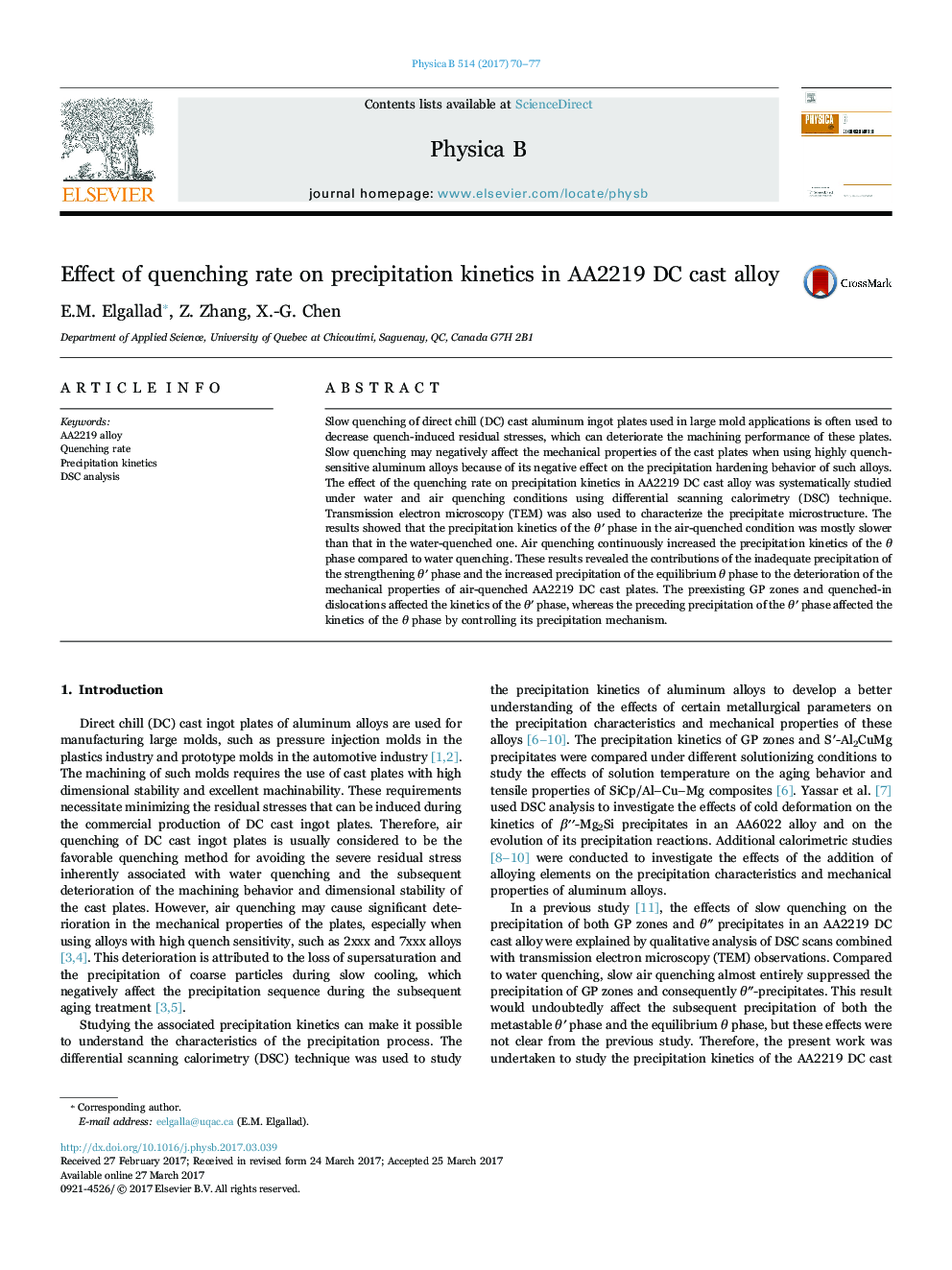| Article ID | Journal | Published Year | Pages | File Type |
|---|---|---|---|---|
| 5492017 | Physica B: Condensed Matter | 2017 | 8 Pages |
Abstract
Slow quenching of direct chill (DC) cast aluminum ingot plates used in large mold applications is often used to decrease quench-induced residual stresses, which can deteriorate the machining performance of these plates. Slow quenching may negatively affect the mechanical properties of the cast plates when using highly quench-sensitive aluminum alloys because of its negative effect on the precipitation hardening behavior of such alloys. The effect of the quenching rate on precipitation kinetics in AA2219 DC cast alloy was systematically studied under water and air quenching conditions using differential scanning calorimetry (DSC) technique. Transmission electron microscopy (TEM) was also used to characterize the precipitate microstructure. The results showed that the precipitation kinetics of the θⲠphase in the air-quenched condition was mostly slower than that in the water-quenched one. Air quenching continuously increased the precipitation kinetics of the θ phase compared to water quenching. These results revealed the contributions of the inadequate precipitation of the strengthening θⲠphase and the increased precipitation of the equilibrium θ phase to the deterioration of the mechanical properties of air-quenched AA2219 DC cast plates. The preexisting GP zones and quenched-in dislocations affected the kinetics of the θⲠphase, whereas the preceding precipitation of the θⲠphase affected the kinetics of the θ phase by controlling its precipitation mechanism.
Related Topics
Physical Sciences and Engineering
Physics and Astronomy
Condensed Matter Physics
Authors
E.M. Elgallad, Z. Zhang, X.-G. Chen,
